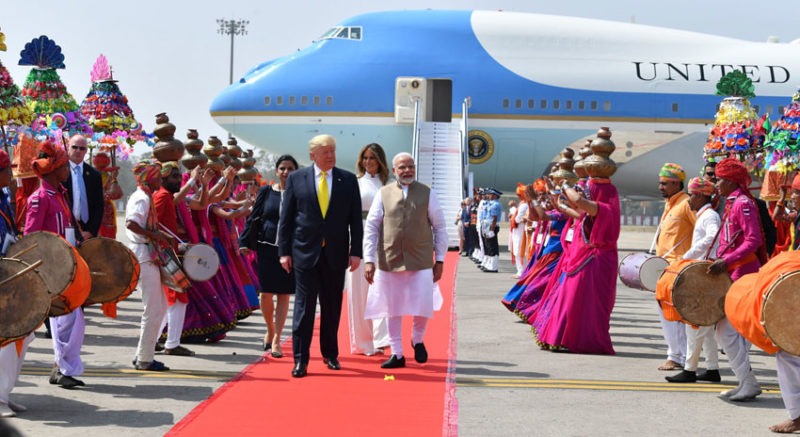Politico-Democratic Giants Meet in India – A Memorable Visit with Possible Electoral Ramifications
(Above): Indian Prime Minister Narendra Modi (r) welcoming U.S. President Donald Trump and First Lady Melania Trump, on their arrival at Sardar Vallabhbhai Patel International Airport, at Ahmedabad, Gujarat, Feb. 24. (PIB)
Two political heads, the 45th U.S. President, Donald Trump, and the Indian Prime Minister, Narendra Modi, of the world’s top two democracies met in India, Feb. 24-25, to underline the significance of their unique bilateral relationship.
The visit by Trump, accompanied by his family and an official delegation, spoke of a new partnership that intends to countervail the growing nexus of an erstwhile communist nation Russia and the still communist China, both regarded as heavyweights in Eurasia, though coming short of closing any major deal between the two countries, except for a $3.4 billion military helicopter contract and announcements for a limited trade agreement, still in the final stages and only hinting at greater market access to U.S. products.
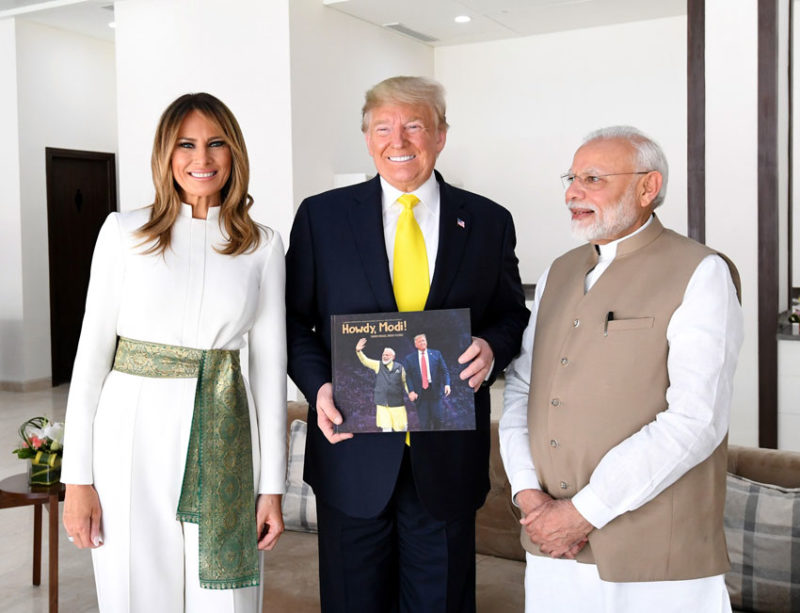
For the two men who love the crowds as much the crowds love them, the Ahmedabad campaign style jamboree at the Motera Stadium, the biggest cricket venue in the world, packed with not less than 125,000 people and thousands more lining up the Trump’s motorcade route from the airport to the newly constructed stadium, provided a visual spectacle and an opportunity for Trump who fresh from his impeachment trial is raring at a second shot at the US Presidency, lapping up public enthusiasm every second of the humongous rally that has no parallel in his own country.
Political gains from ‘Namaste Trump” event trickle down to Trump’s ratings getting upped with the second largest foreign born and 4 million increasingly influential and affluent Indian-Americans who are political donors and come from some of the swing states of the U.S.
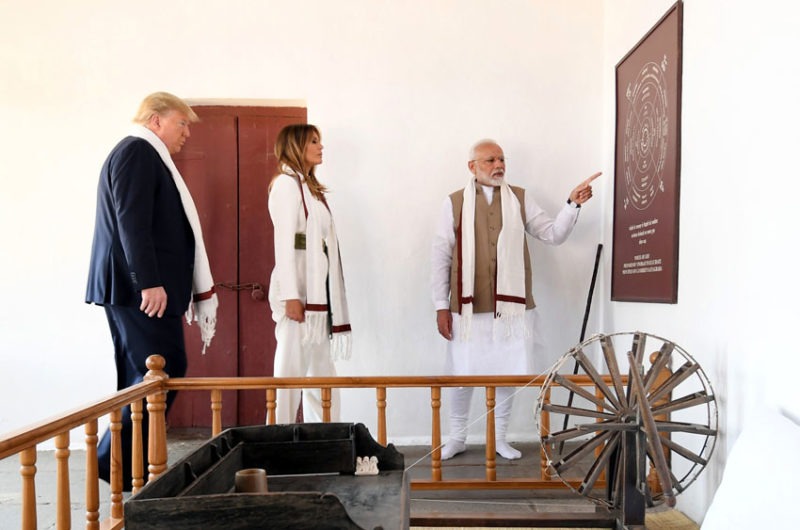
But right from the second day of his setting foot on the Indian soil, the anti-Citizenship Amendment Act (CAA) and anti-National Register of Citizens protests largely run by the Muslim community, erupted into a communal violence that lasted two days and left more than three dozen dead and many more grievously injured, dampening brand Modi that had gained traction in the last few years.
The recent amendment is a means to fast-track citizenship for persecuted members of religious minorities in the three Islamic neighbouring countries of Pakistan, Bangladesh and Afghanistan, who migrated to India on or before December end 2014, but excluding the Muslims.
The more than two months long sit-in protest at Shaheen Bagh that went unchecked as it blockaded a six lane highway, impeding movement and activity, spilled on to the local subway metro stations during Trump’s visit, obviously to cause ruckus, deter attention from the Trump’s visit and diminish gains from the visit, and then escalated to arson, violence and terror, the trigger point being an ultimatum for an end to the Muslim protesters’ blockade issued by a local Bharatiya Janata Party politician.
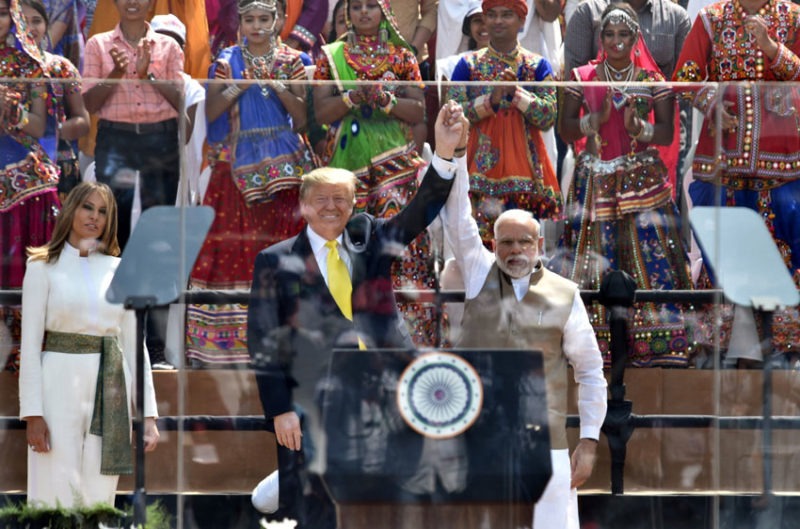
Though it is now unraveling that the violence was not spontaneous but for the two leaders who flaunt right of the centre nationalism and unabashed populism in their respective domains, the violence did not succeed in putting hurdles in the Trump-Modi meet as Trump blatantly refused to be drawn into criticizing New Delhi’s handling of the riot, calling CAA an internal matter for the country to resolve, even as the press at large went hammer and tongs against the central leadership of Modi and the centre controlled Delhi police for failing to prevent the conflagration and going so far as to condemn even its remarkable restraint.
As much erroneous it would be to label the Delhi riots as a fall in Modi’s ratings in India so would it be to imagine that Brand Modi has not suffered a dent internationally and allowed an opening to critics and sundry topnotch business and diplomatic interests to use the issue as a cause de celebre, to which a recommended antidote could be restarting the political process in Kashmir and clear all misgivings pertaining to the CAA.
Though the Trump visit cannot be said to have achieved geopolitical breakthroughs but Trump did extract India’s support for an easy departure of US troops from Afghanistan, eighteen years after its military deployment in the country, a past electoral promise to be fulfilled.
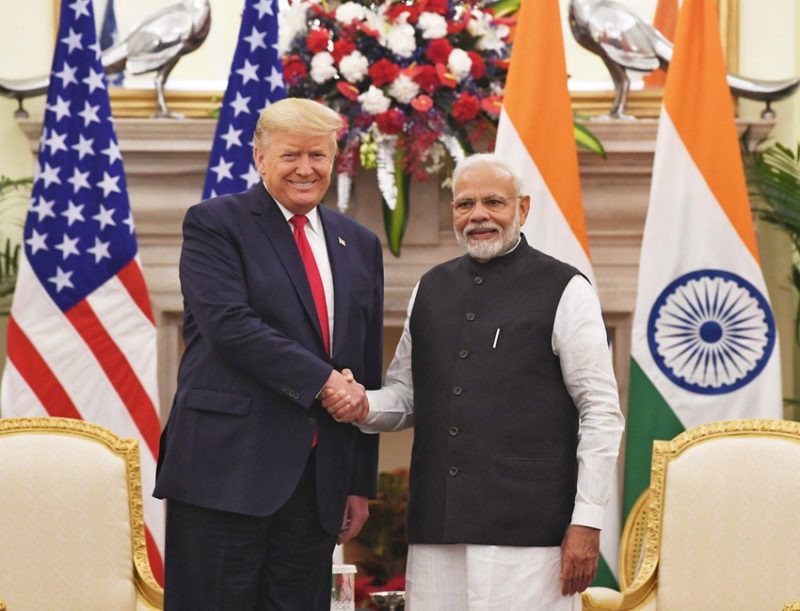
It remains to be seen what sort of balance the US would strike between India and Pakistan that is also crucial to overseeing the signing of the peace deal, questionable in itself, with the Taliban who have emerged the strongest contenders on the Afghan political tarmac.
India, a contiguous neighbor and a development partner, has sent its six member envoy team led by Foreign Secretary Harsh Vardhan Shringla to Kabul to exert influence on those Afghani leaders with whom it enjoys equity, but establishing lines of contact with the Taliban, a hitherto inimical force to India and refuses to recognize President Ashraf Ghani’s elected government, while buttressing New Delhi’s agenda in the region with the aid of the US strategic cover, would be the craftier part.
